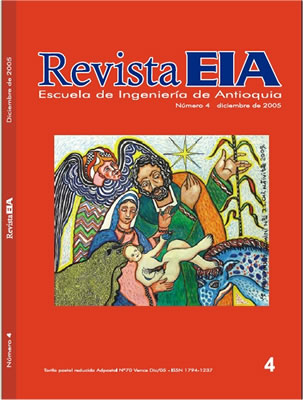INTERFACE LAYER TO IMPROVE POLYSTYRENE ATTACHMENT ON A QUARTZ CRYSTAL RESONATOR
INTERFACE LAYER TO IMPROVE POLYSTYRENE ATTACHMENT ON A QUARTZ CRYSTAL RESONATOR


Esta obra está bajo una licencia internacional Creative Commons Atribución-NoComercial-SinDerivadas 4.0.
Declaración del copyright
Los autores ceden en exclusiva a la Universidad EIA, con facultad de cesión a terceros, todos los derechos de explotación que deriven de los trabajos que sean aceptados para su publicación en la Revista EIA, así como en cualquier producto derivados de la misma y, en particular, los de reproducción, distribución, comunicación pública (incluida la puesta a disposición interactiva) y transformación (incluidas la adaptación, la modificación y, en su caso, la traducción), para todas las modalidades de explotación (a título enunciativo y no limitativo: en formato papel, electrónico, on-line, soporte informático o audiovisual, así como en cualquier otro formato, incluso con finalidad promocional o publicitaria y/o para la realización de productos derivados), para un ámbito territorial mundial y para toda la duración legal de los derechos prevista en el vigente texto difundido de la Ley de Propiedad Intelectual. Esta cesión la realizarán los autores sin derecho a ningún tipo de remuneración o indemnización.
La autorización conferida a la Revista EIA estará vigente a partir de la fecha en que se incluye en el volumen y número respectivo en el Sistema Open Journal Systems de la Revista EIA, así como en las diferentes bases e índices de datos en que se encuentra indexada la publicación.
Todos los contenidos de la Revista EIA, están publicados bajo la Licencia Creative Commons Atribución-NoComercial-NoDerivativa 4.0 Internacional
Mostrar biografía de los autores
Technologies for thin film deposition have been used to improve the functionalization of quartz crystal resonators (QCR); such technologies, for example, are spin coating and Langmuir-Blodgett (LB) film preparation. These experments are required because the film uniformity and homogeneity over the quartz crystal resonator are fundamental for its applications as chemical and biological sensors. Film deposition of polystyrene (PS) particles, as well as polyvinyl chloride (PVC), was performed in solvents such as cyclohexanone, tetrahydrofuran (THF), dimethyl formamide and chloroform at different concentrations using the spin coating procedure on wafer targets. The film quality was determined by optical microscopy, ellipsometry, and profilometry. Additionally, films on wafers or QCR with gold surface have been prepared by spreading the mentioned substances on an aqueous subphase and transferring it by dipping from the subphase surface onto the target. For LB film preparation arachidic acid and PS particles have been used. Prepared mono- or multilayered films of these substances on wafer or gold quartzes have been controlled additionally by IR-spectrometry. The resonant behavior of QCR before and after surface coating has been measured with a network analyzer. In combination with a graphical user interface the data could be easily recorded and visualized.
Resumen: Se describe el empleo de técnicas de formación de películas tendientes a mejorar el funcionamiento de un resonador de cristal de cuarzo (QCR); dichas tecnologías fueron, por ejemplo, preparaciones de recubrimiento mediante los métodos de spin y Langmuir-Blodgett (LB). La uniformidad y homogeneidad de la película sobre el cristal de cuarzo es fundamental para las aplicaciones que tiene un resonador como sensor químico y biológico. Se formaron películas de poliestireno (PS) y de cloruro de polivinilo (PVC) en solventes como ciclohexanona, tetrahidrofurano (THF), dimetilformamida y cloroformo a diferentes concentraciones, usando el procedimiento de cubrimiento por spin en soportes corrugados tipo wafer. La calidad de las películas fue determinada usando microscopía óptica, elipsometría y perfilometría. Además, se prepararon películas en soportes corrugados y en QRC con superficie de oro por irrigación de la mencionada sustancia en una subfase acuosa y transfiriéndola por impregnación de la superficie de subfase en el soporte. Para la preparación de la película LB se empleó ácido araquídico y partículas de PS. Las preparaciones de películas de monocapa y multicapa de estas sustancias en soportes corrugados o en superficies de cuarzo doradas se controlaron adicionalmente por espectrometría IR. El comportamiento resonante del QCR antes y después del recubrimiento de su superficie se midió con un analizador de red. En combinación con una interfaz gráfica los datos se pudieron fácilmente grabar y observar.
Visitas del artículo 230 | Visitas PDF 151
